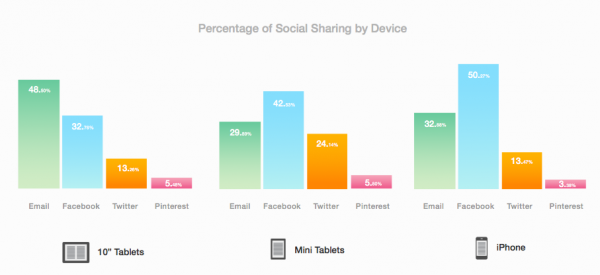Study: iPad Controls 98 Percent Of Tablet Web Traffic
- Fahad H

- Nov 9, 2012
- 2 min read
There are a lots of tablets in the market now and hardware-tracking firm IDC
says that Android’s share is gaining on Apple. However, despite the increase in “shipments” of various tablets, very few of them drive meaningful web traffic according a new study from mobile publishing platform Onswipe.
Onswipe says that the iPad is responsible for a remarkable 98 percent of all tablet-based traffic to its publisher partners. All other tablets drive less than 2 percent of web traffic combined.
This would be almost unbelievable if it weren’t supported by other research showing similar trends. However the Onswipe numbers are even more extreme than other prior data showing the iPad responsible for more than 91 percent of tablet-related web traffic.

Onswipe also points out that iPad owners are more engaged and spend 56 percent more time per session with their tablets vs. the iPhone. The iPad also is responsible for more web traffic than the iPhone and Android devices combined, despite the fact that smartphones are considerably more numerous than the iPad.

Kindle Fire owners spend more time with their devices than even iPad owners. Onswipe speculates this is due to the Kindle legacy of long-form content consumption (eReading) because the Kindle Fire sees very limited use as an internet device. As an aside, a majority (84 percent) of Kindle Fire reader-users prefer the portrait orientation to reading in landscape mode. By a small margin iPad owners prefer the landscape orientation.
Interestingly Onswipe found that the Chrome browser was more popular on the iPhone than on Android devices. Chrome has become the default browser on more recent Android devices. The market share breakdown below probably reflects that the majority of Android handset owners remain on earlier versions (e.g. Gingerbread) of the OS.

Tablet size doesn’t appear to diminish time spent with the device. Onswipe observed, “Fully-featured [sic] 7” web tablets, like the Nexus 7, experience the same time on site as 10” tablets such as the iPad.”
However what does apparently change with the size of the device is the use of email vs. social media to share content: “As users transition from 10” tablets to ‘mini’ tablets, we see a decrease in sharing by email and an increase in social sharing.”

These findings reflect the behavioral differences that are starting to reveal themselves as a range of mobile devices and screen sizes penetrate the market and take over functions and activities that used to be performed almost exclusively on the PC.








Comments